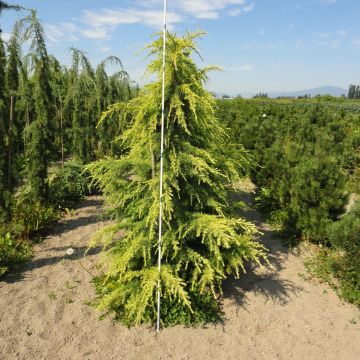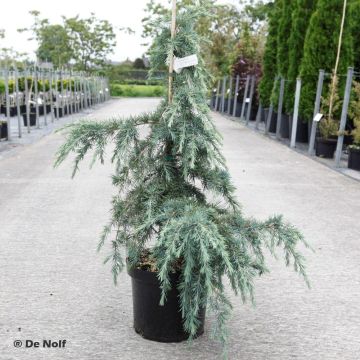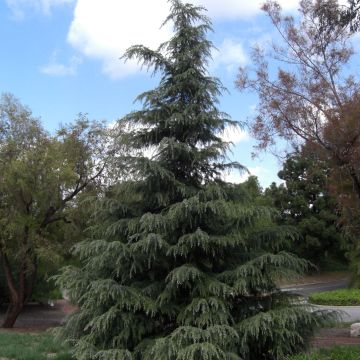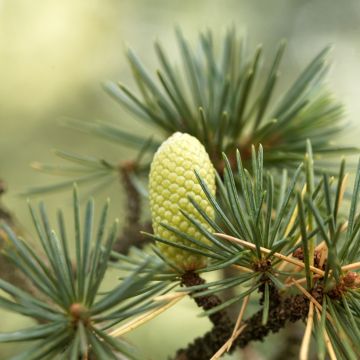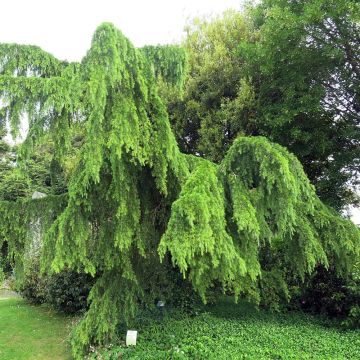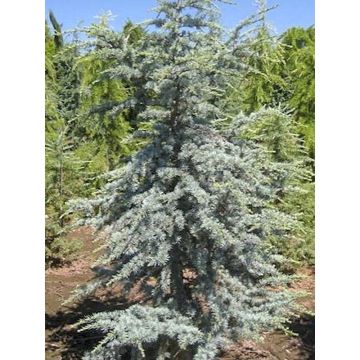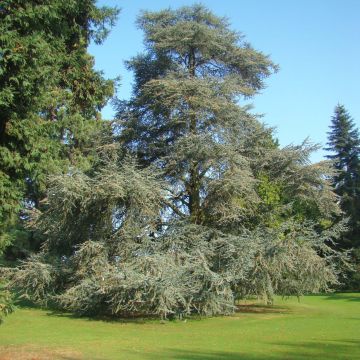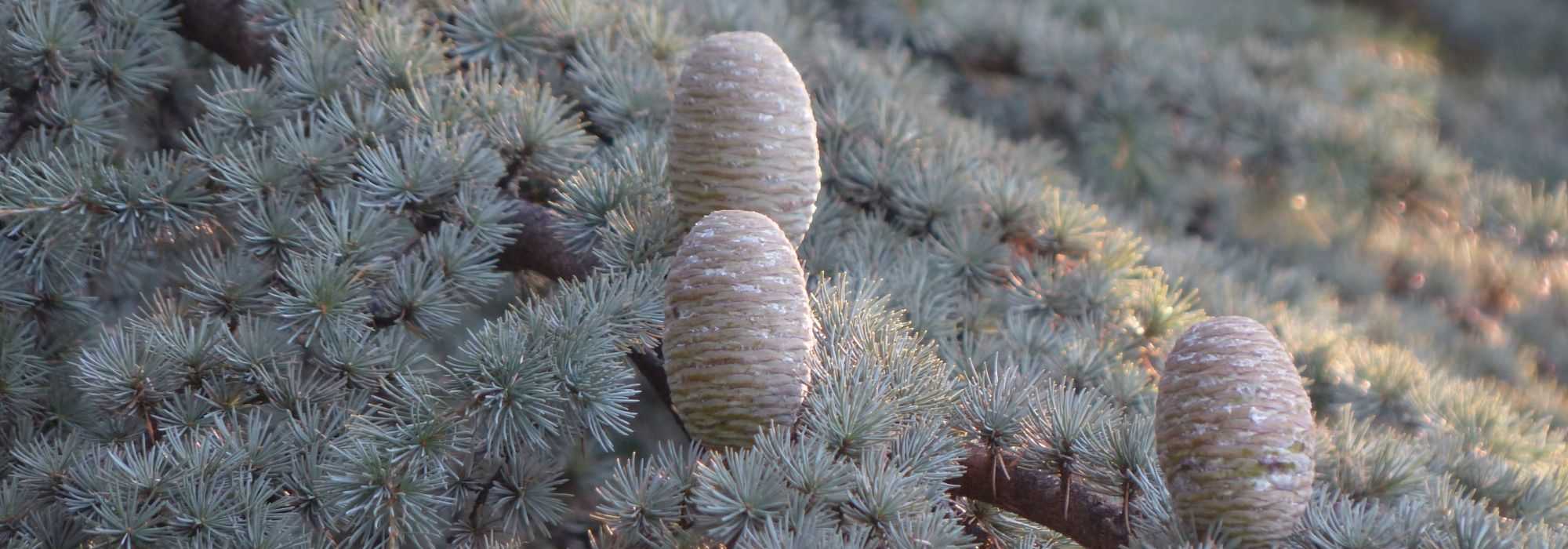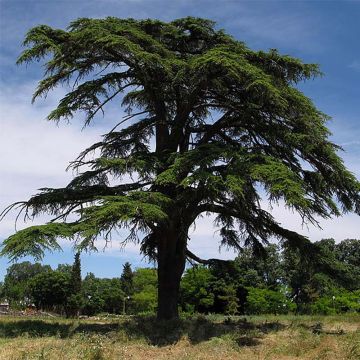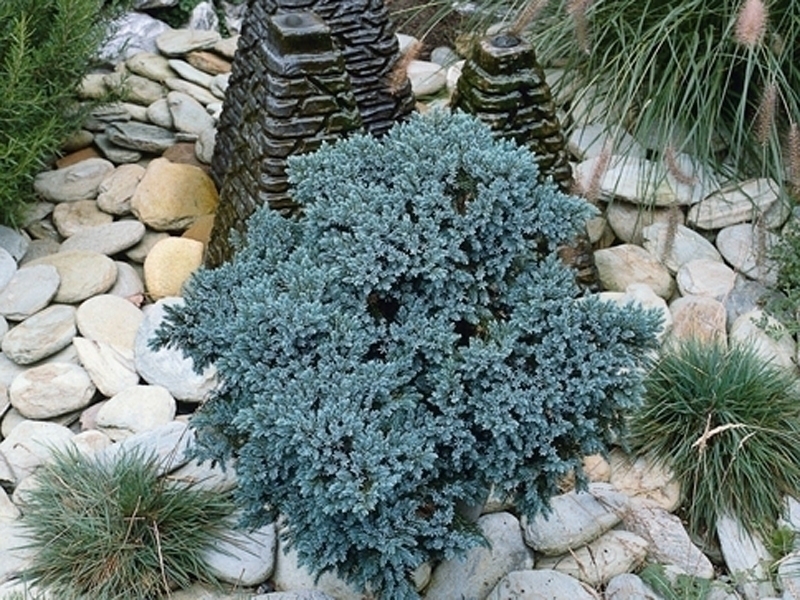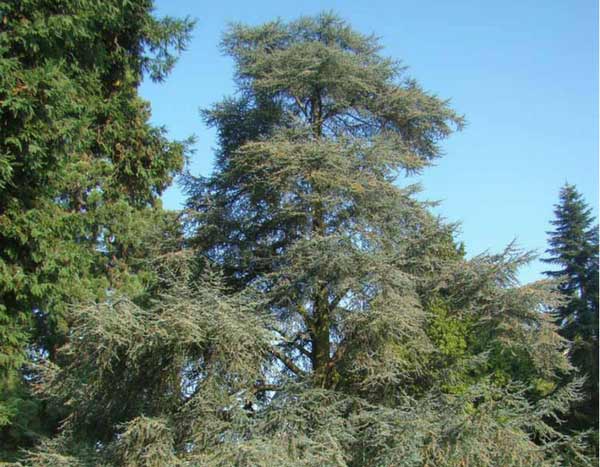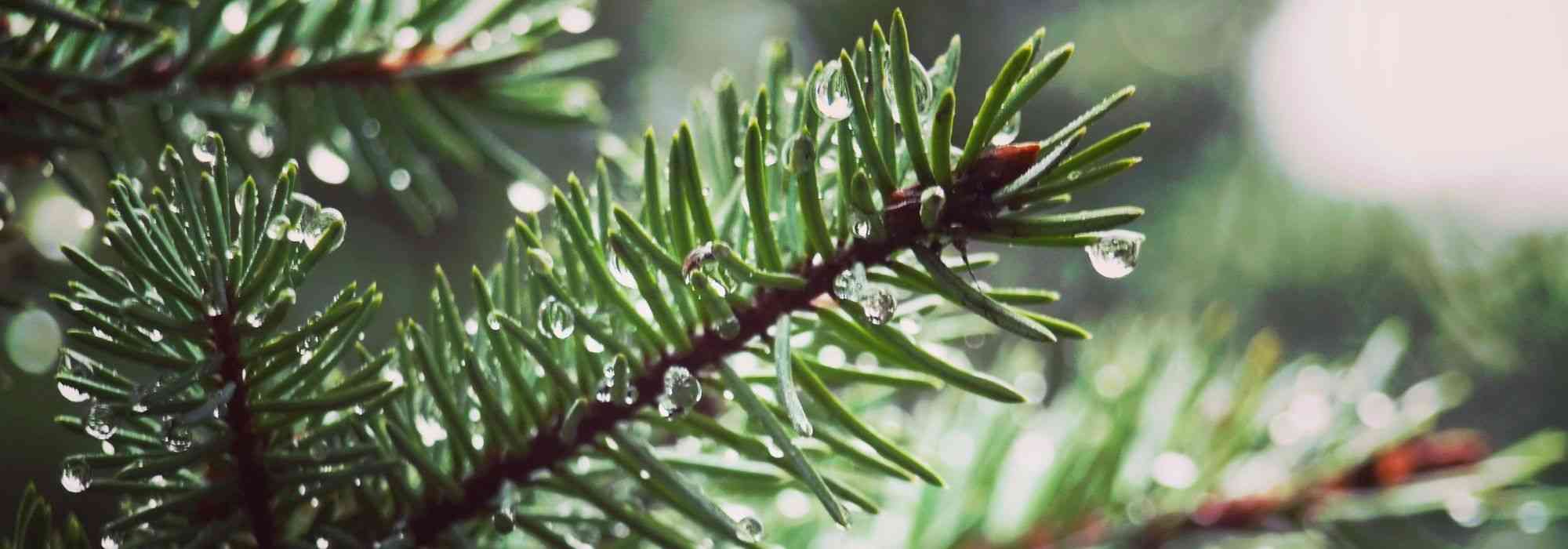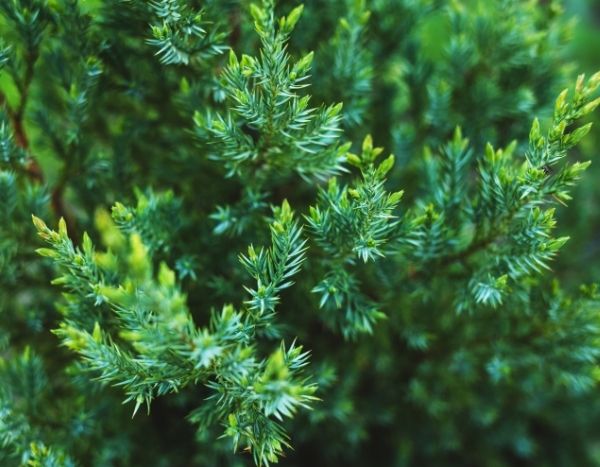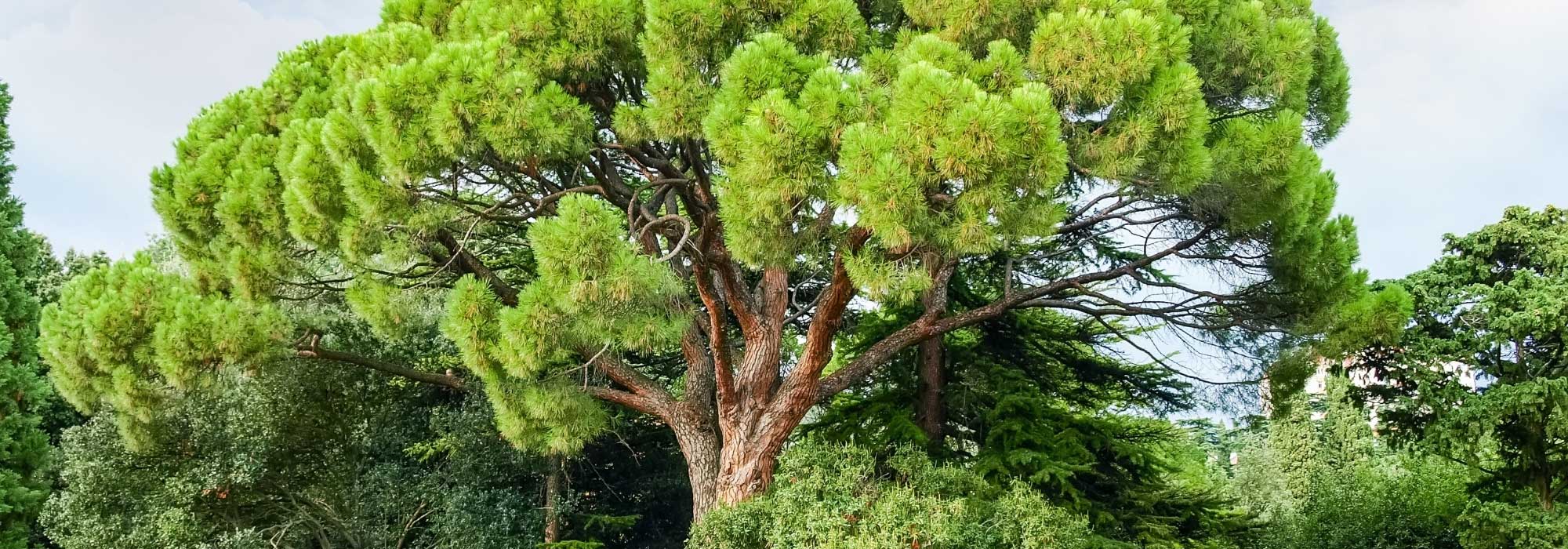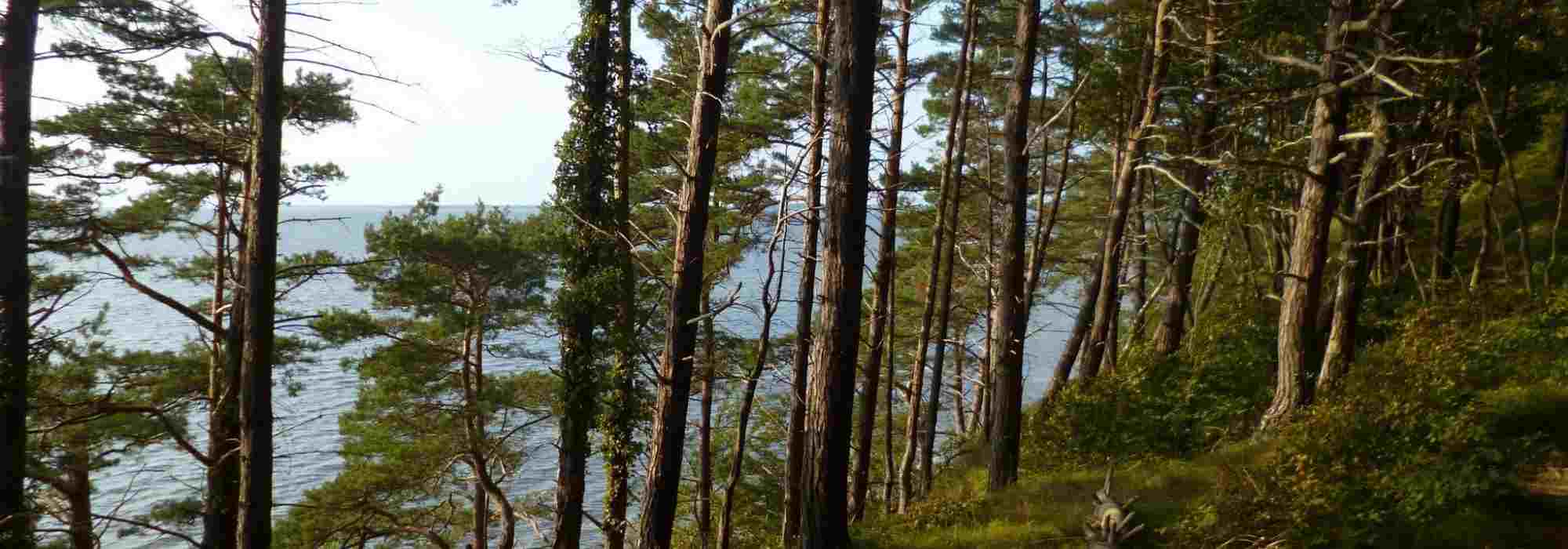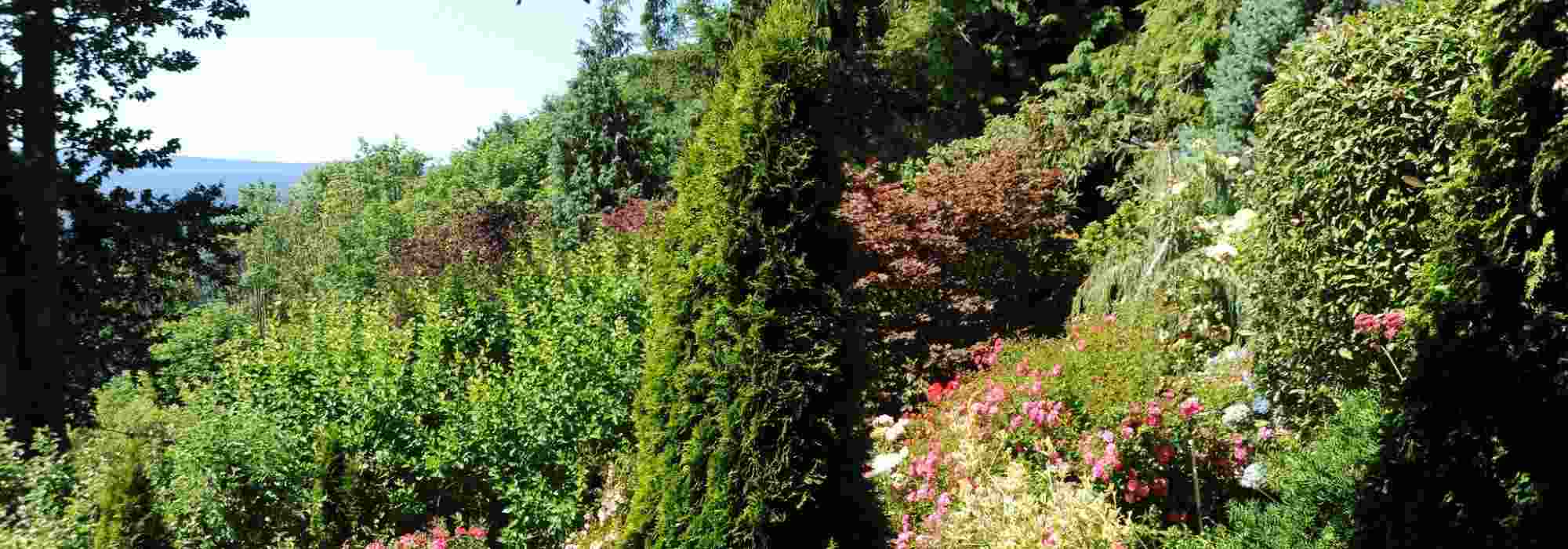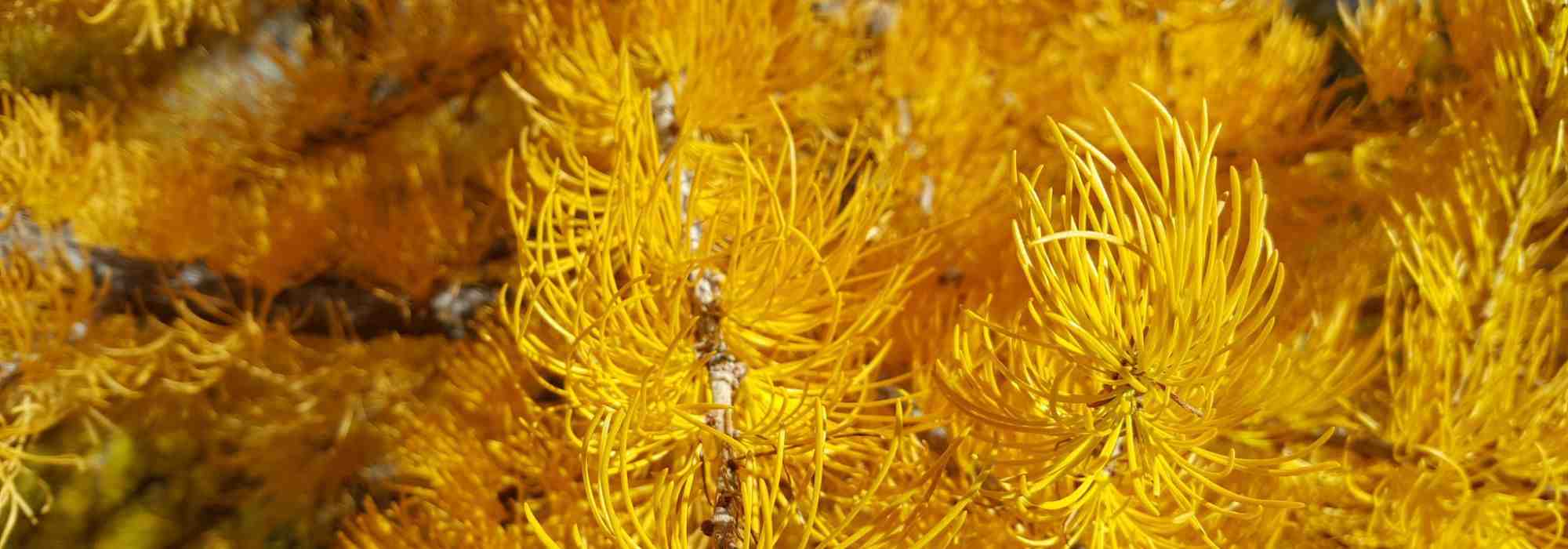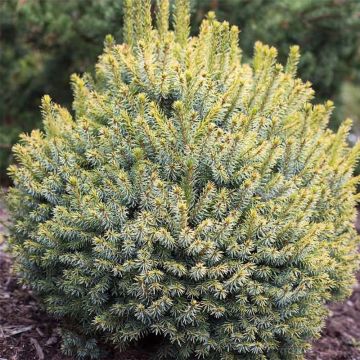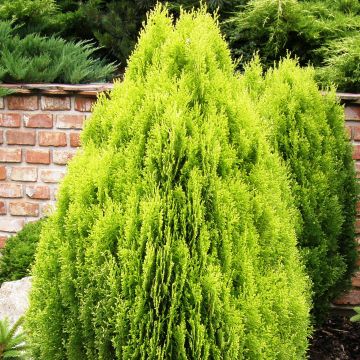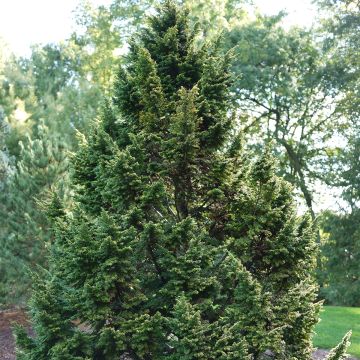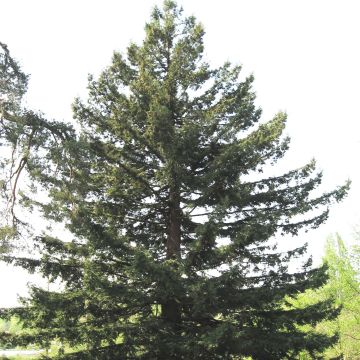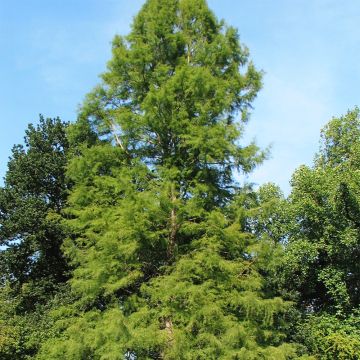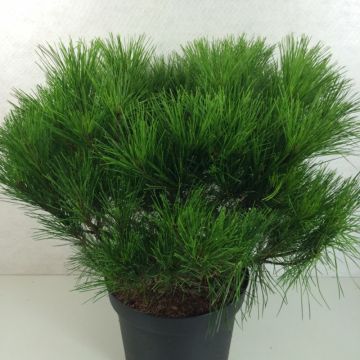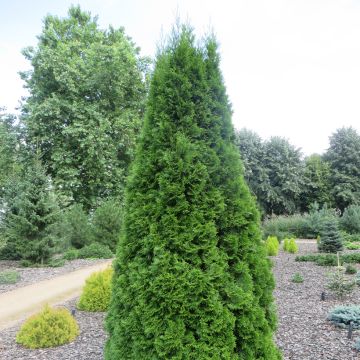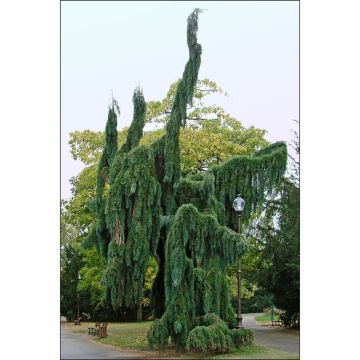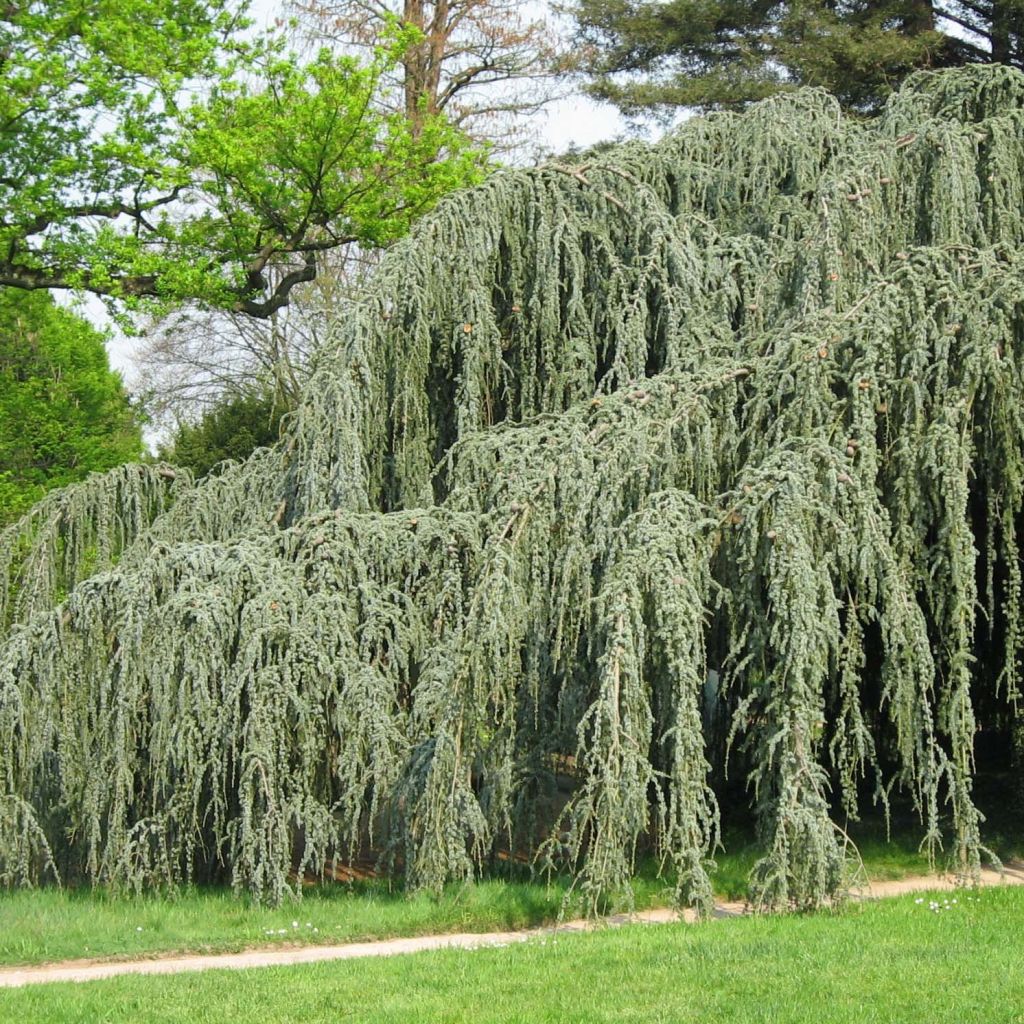

Cedrus libani subsp. atlantica Glauca Pendula - Blue Atlas Cedar
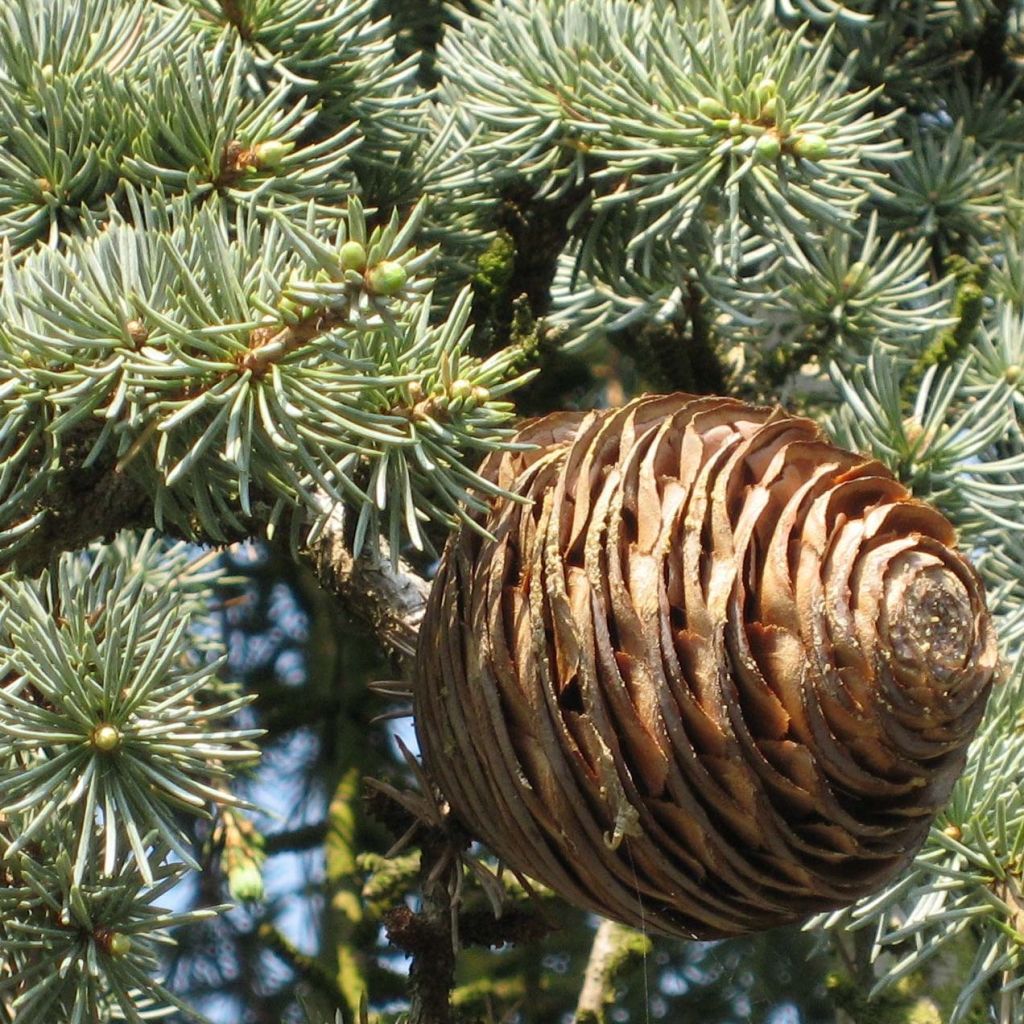

Cedrus libani subsp. atlantica Glauca Pendula - Blue Atlas Cedar
Cedrus libani subsp. atlantica Glauca Pendula - Blue Atlas Cedar
Cedrus libani subsp. atlantica Glauca Pendula
Blue Atlas Cedar
Special offer!
Receive a €20 voucher for any order over €90 (excluding delivery costs, credit notes, and plastic-free options)!
1- Add your favorite plants to your cart.
2- Once you have reached €90, confirm your order (you can even choose the delivery date!).
3- As soon as your order is shipped, you will receive an email containing your voucher code, valid for 3 months (90 days).
Your voucher is unique and can only be used once, for any order with a minimum value of €20, excluding delivery costs.
Can be combined with other current offers, non-divisible and non-refundable.
Why not try an alternative variety in stock?
View all →This plant carries a 24 months recovery warranty
More information
We guarantee the quality of our plants for a full growing cycle, and will replace at our expense any plant that fails to recover under normal climatic and planting conditions.
Does this plant fit my garden?
Set up your Plantfit profile →
Description
The Cedrus libani atlantica 'Glauca Pendula' is a beautiful tree with a weeping habit. It has a straight trunk that can vary in height depending on its growth conditions. The tree's large branches flow down from the trunk, creating a stunning cascade of stems densely covered with blue-green needles. During the summer, the needles turn silver. The tree grows slowly and becomes wider, making it perfect for larger gardens. It can be planted alone in the centre of a rocky meadow or a formal lawn. The tree is hardy and can handle sunny locations with well-drained soils that are not too dry but still moist. It can grow in both poor and rich soils, and it can tolerate pollution and sea spray.
The Atlas cedar, also known as the Cedrus libani subsp. atlantica is a conifer found in the Atlas Mountains of Morocco, Algeria, and Tunisia. It resembles the Lebanese cedar but has a more slender shape and upright branches with non-prickly needles. The Atlas cedar is known for its longevity and can live for a long time.
The 'Glauca Pendula' tree is known for its weeping habit and slow growth. It typically grows up to 4 metres (13 feet 1 inch) tall and has a spread of 10 metres 10 inches). The tree has a wide trunk that divides into large lateral branches which arch down to the ground. The bark starts grey and smooth but becomes rougher over time and peels off in small scales. The branches are drooping and have fine hair when young. The tree produces clusters of bright blue-green needles, turning gray-blue with silver-grey highlights as they mature. In early autumn, the tree produces cylindrical female cones flattened at the top, measuring 5 to 7 cm (2 to 2.8 in) in length and green in colour, turning brown-purple. The male catkins are conical and brown. The seeds take 3 years to mature and are nestled between the scales of the female cones. They have a 2 cm (0.8 in) long wing.
The Atlas Blue Cedar is a stunning tree that can be the centrepiece of any garden. It can be planted as a single tree to showcase its beautiful silhouette and foliage, or multiple trees can be planted along a pathway to create a unique and elegant style. When planting multiple trees, it's important to space them adequately to prevent interference in the future. The Atlas Cedar is hardy and can thrive in poor, rocky, and dry soils in summer. It can also be grown in containers, making it a versatile addition to any garden.
Cedrus libani subsp. atlantica Glauca Pendula - Blue Atlas Cedar in pictures




Plant habit
Foliage
Botanical data
Cedrus
libani subsp. atlantica
Glauca Pendula
Pinaceae
Blue Atlas Cedar
Cultivar or hybrid
Other Cedar
View all →Planting and care
The 'Glauca Pendula' Atlas cedar is an easy-to-care-for tree that can grow in various soil and climate conditions. It can tolerate unfavourable conditions, even summer droughts, once established. The tree can survive freezing temperatures of around -15/-16°C (5/3.2 °F).
To plant the Atlas cedar, choose a sunny, well-cleared location with deep and well-drained soil that can prevent water from stagnating. Avoid disturbing the root system, as it needs to anchor itself firmly in the soil to resist drought and wind. Before planting, soak the root balls thoroughly. The best time to plant is September to November and February to June.
When planting, stake your young cedar and water it regularly to help it establish, especially during the first 2-3 years and in summer. You can add blood, fish and bone during planting. Additionally, you may use a special conifer fertiliser every April and cultivate the soil in summer.
Usually, pruning is not necessary. However, you may need to shape the tree or remove branches that die at the base of the trunk as the tree grows.
Planting period
Intended location
Care
Planting & care advice
This item has not been reviewed yet - be the first to leave a review about it.
Similar products
Haven't found what you were looking for?
Hardiness is the lowest winter temperature a plant can endure without suffering serious damage or even dying. However, hardiness is affected by location (a sheltered area, such as a patio), protection (winter cover) and soil type (hardiness is improved by well-drained soil).

Photo Sharing Terms & Conditions
In order to encourage gardeners to interact and share their experiences, Promesse de fleurs offers various media enabling content to be uploaded onto its Site - in particular via the ‘Photo sharing’ module.
The User agrees to refrain from:
- Posting any content that is illegal, prejudicial, insulting, racist, inciteful to hatred, revisionist, contrary to public decency, that infringes on privacy or on the privacy rights of third parties, in particular the publicity rights of persons and goods, intellectual property rights, or the right to privacy.
- Submitting content on behalf of a third party;
- Impersonate the identity of a third party and/or publish any personal information about a third party;
In general, the User undertakes to refrain from any unethical behaviour.
All Content (in particular text, comments, files, images, photos, videos, creative works, etc.), which may be subject to property or intellectual property rights, image or other private rights, shall remain the property of the User, subject to the limited rights granted by the terms of the licence granted by Promesse de fleurs as stated below. Users are at liberty to publish or not to publish such Content on the Site, notably via the ‘Photo Sharing’ facility, and accept that this Content shall be made public and freely accessible, notably on the Internet.
Users further acknowledge, undertake to have ,and guarantee that they hold all necessary rights and permissions to publish such material on the Site, in particular with regard to the legislation in force pertaining to any privacy, property, intellectual property, image, or contractual rights, or rights of any other nature. By publishing such Content on the Site, Users acknowledge accepting full liability as publishers of the Content within the meaning of the law, and grant Promesse de fleurs, free of charge, an inclusive, worldwide licence for the said Content for the entire duration of its publication, including all reproduction, representation, up/downloading, displaying, performing, transmission, and storage rights.
Users also grant permission for their name to be linked to the Content and accept that this link may not always be made available.
By engaging in posting material, Users consent to their Content becoming automatically accessible on the Internet, in particular on other sites and/or blogs and/or web pages of the Promesse de fleurs site, including in particular social pages and the Promesse de fleurs catalogue.
Users may secure the removal of entrusted content free of charge by issuing a simple request via our contact form.
The flowering period indicated on our website applies to countries and regions located in USDA zone 8 (France, the United Kingdom, Ireland, the Netherlands, etc.)
It will vary according to where you live:
- In zones 9 to 10 (Italy, Spain, Greece, etc.), flowering will occur about 2 to 4 weeks earlier.
- In zones 6 to 7 (Germany, Poland, Slovenia, and lower mountainous regions), flowering will be delayed by 2 to 3 weeks.
- In zone 5 (Central Europe, Scandinavia), blooming will be delayed by 3 to 5 weeks.
In temperate climates, pruning of spring-flowering shrubs (forsythia, spireas, etc.) should be done just after flowering.
Pruning of summer-flowering shrubs (Indian Lilac, Perovskia, etc.) can be done in winter or spring.
In cold regions as well as with frost-sensitive plants, avoid pruning too early when severe frosts may still occur.
The planting period indicated on our website applies to countries and regions located in USDA zone 8 (France, United Kingdom, Ireland, Netherlands).
It will vary according to where you live:
- In Mediterranean zones (Marseille, Madrid, Milan, etc.), autumn and winter are the best planting periods.
- In continental zones (Strasbourg, Munich, Vienna, etc.), delay planting by 2 to 3 weeks in spring and bring it forward by 2 to 4 weeks in autumn.
- In mountainous regions (the Alps, Pyrenees, Carpathians, etc.), it is best to plant in late spring (May-June) or late summer (August-September).
The harvesting period indicated on our website applies to countries and regions in USDA zone 8 (France, England, Ireland, the Netherlands).
In colder areas (Scandinavia, Poland, Austria...) fruit and vegetable harvests are likely to be delayed by 3-4 weeks.
In warmer areas (Italy, Spain, Greece, etc.), harvesting will probably take place earlier, depending on weather conditions.
The sowing periods indicated on our website apply to countries and regions within USDA Zone 8 (France, UK, Ireland, Netherlands).
In colder areas (Scandinavia, Poland, Austria...), delay any outdoor sowing by 3-4 weeks, or sow under glass.
In warmer climes (Italy, Spain, Greece, etc.), bring outdoor sowing forward by a few weeks.






























